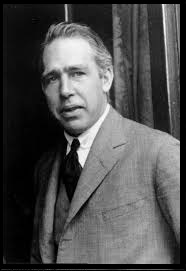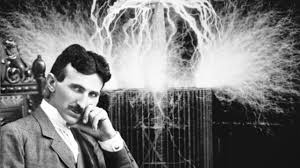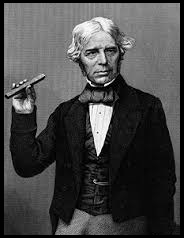How Bohr impoved Atomic theory

Niels Bohr 1885 – 1962

Niels Bohr was a Danish physicist who made fundamental contributions to understanding atomic structure and quantum mechanics, for which he received the Nobel Prize in Physics in 1922.
Bohr’s work helped solve the problems classical physics could not explain about the nuclear model of the atom.
He advanced the theory of electrons travelling in orbits around the atom's nucleus, Niels Bohr proposed a theory for the hydrogen atom based on quantum theory that energy is transferred only in certain well defined quantities.
He postulated that electrons moved in fixed orbits around the atom’s nucleus, and he explained how they emitted or absorbed energy. He proved that atoms give off electromagnetic radiation as a result of electrons jumping to different orbit levels.
Bohr's Atomic Model

An atom is made up of three particles, electrons, protons and neutrons. Electrons have a negative charge and protons have a positive charge whereas neutrons have no charge.
They are neutral. Due to the presence of equal number of negative electrons and positive protons, the atom as a whole is electrically neutral.
The atom has a small, positively charged nucleus surrounded by electrons that travel in circular orbits around the nucleus. He explain the stability of an atom,
showed new arrangement of electrons in the atom in 1913.
The electrons could revolve around the nucleus in only 'certain orbits' energy levels, each orbit having a different radius.
Niels Bohr proposed the quantum theory of an atom. The theory was based on the quantum theory of radiation.
the atom as a tiny, spherical body which consists nucleus at center and negatively charged particles (electrons) revolving around nucleus in a certain path known as orbit.
When an electron is revolving in a particular orbit or particular energy level around the nucleus, the electron does not radiate energy/lose energy even though it has accelerated motion around the nucleus.
New postulate with same basis concepts
1. Electrons in an atoms orbit around the nucleus. The electrons revolve rapidly around the nucleus in fixed circular paths called energy levels or shells. The 'energy levels' or 'shells' or 'orbits' are represented in two ways: numbers 1, 2, 3, 4, 5 and 6 or by letters K, L, M, N, O and P.
2.The protons and electrons are located in a small nucleus at the center of the atom. Due to the presence of protons, the nucleus is positively charged
3.The electrons can only orbit stably, without radiating, in certain orbits
4.There is no change in the energy of electrons as long as they keep revolving with the same energy level. But, when an electron jumps from a lower energy level to a higher one, some energy is absorbed while some energy is emitted
5.These orbits has definite energies and are also called energy shells or energy levels. In these orbits, the electron's acceleration does not result in radiation and energy loss.
6. When an electron jumps from a higher energy level to a lower one, the amount of energy absorbed or emitted
7.Electrons can only gain and lose energy by jumping from one orbit to another, thus absorbing or emitting electromagnetic radiation with a frequency.
an electron jumps from orbit 1 (energy E1) to orbit 2 (energy E2), the change in energy is given by E2 - E1.
8.The absorption and emission of light due to electron jumps are measured by use of spectrometer. then E2 - E1 = ΔE = hνν
You may also like :


 Corona virus _ A Virus or Conspiracy by China..
Corona virus _ A Virus or Conspiracy by China.. What Your Sun Sign Says..
What Your Sun Sign Says.. Top 10 Football Player With Highest Number of Goals..
Top 10 Football Player With Highest Number of Goals.. Worlds most expensive car and who is the owner..
Worlds most expensive car and who is the owner.. does amazon affiliate pay for clicks and Amazon Affiliate program click payment terms and condition..
does amazon affiliate pay for clicks and Amazon Affiliate program click payment terms and condition.. Nikola Tesla the electric man..
Nikola Tesla the electric man.. How Bohr impoved Atomic theory..
How Bohr impoved Atomic theory.. Magic Behind the Radiation-Quantum Theory of Radiation and Black body ..
Magic Behind the Radiation-Quantum Theory of Radiation and Black body .. How Electromagnetism was discovered used and who pioneered it..
How Electromagnetism was discovered used and who pioneered it.. TOP MOST VALUED COMPANIES ..
TOP MOST VALUED COMPANIES .. WORLD COULD BE END SOON IF..
WORLD COULD BE END SOON IF.. Tech Giants Microsoft Facebook Twitter YouTube against terrorism..
Tech Giants Microsoft Facebook Twitter YouTube against terrorism..























